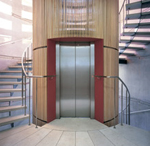
Passenger Lift Regulations
What is the EU Lift Directive 95/16/EC?
The lift directive was created in order to provide a uniform set of standards for lift manufacturers and installers to adhere to that ensures passenger safety concerns are met. The European Lift Directive 95/16/EC is the standard to which all new lift equipment must conform and this is enforceable by law in all EU member countries. The previous standard, the BS 5655 Parts 1 to 10 was only a list of recommendations and was not enforceable by law. The official UK version is known as "The Lift Regulations 1997". In 1999 a new set of standards was written and approved by all EU member countries and include: BS EN81-1: Safety Rules for Electric Lifts, BS EN81-2: Safety Rules for Hydraulic Lifts, BS EN81-3: Safety Rules for Service Lifts. In addition PAS 32-1 and PAS 32-2 detail the requirements for examination and testing of new lifts before they are put into service.
How Important is the Directive?
Basically, if you are having new lift equipment installed into a building and you don't want to go to prison, it is very important. Having new lift equipment installed without an official stamp of approval from a Notified Body is a criminal offence and therefore should be avoided at all costs. Not only this, but the Lift Regulations were put in place for a reason: to protect passengers. Circumventing the safety regulations only puts passengers in your building at risk of injury or even death, further underscoring the importance of adherence.
How Do I Make Sure My Lifts are Safe?
The first step in meeting the safety regulations is making sure that the lift design and installation company you select is aware of and adheres to the regulations themselves. This will normally be displayed prominently on the lift company's website or you can simply ask them over the phone or in person when obtaining a quote. In addition to this, familiarising yourself with some of the safety directives can enable you to quickly judge for yourself if something appears to be wrong.
Once your lift equipment is installed, there should be a testing period that ensures the lifts are safe to operate, and the lift car should be fitted with an information plate bearing the CE mark and the Notified Bodies license number.
What Do I Do If I Have Doubts?
If you feel that something is not quite right with your newly installed lift equipment then you should hire an external inspector to come in and check them out. The last thing you want is to put lift equipment into service that is less than safe. Erring on the side of caution is always best, even if it costs you a little extra money. Always make sure your equipment meets the passenger lift regulations before putting it into service.
Also, if you do happen across a lift company that doesn't appear to adhere to safety standards then you should report them at once. It may just be that you save numerous lives in the process and protect countless others from lift-related accidents.
↑ Back to Top